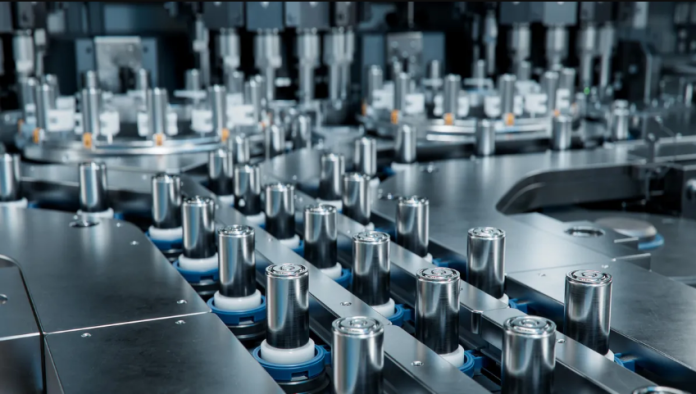The prices of Lithium, the primary workhorse of energy storage solutions today, have dropped by over 60% in the past 18 months. Among many other reasons, this is attributed to a drop in EV demand globally as governments across US and EU started moderating EV related subsidies. There was also an aggressive ramp-up of capacity in China during the Covid period buoyed by the strong EV uptick which has now resulted in a supply glut. To give you a sense of the impact of this glut, we now see that LFP (Lithium Iron Phosphate) batteries are already commercially available at sub-$100 per kWh prices. This was forecast to happen only beyond 2026. At these prices, it is possible for EVs to have capital cost parity with conventional fossil fuel based vehicles which is supposed to be a massive inflection point.
In the world of stationary energy storage, where Lead Acid batteries have ruled the roost for decades, Lithium based batteries become highly attractive substitutes with a significantly longer life and superior performance. Common sense dictates that this is about the worst time to invest in a new chemistry and that we should rather make the most of the ongoing supply glut to drive the agenda of accelerating decarbonization in India. We would however miss the forest for the trees in doing only that and nothing more.
It is a well known fact that the majority of the world’s active materials, the most critical components within a Lithium cell, are processed in China. Chinese players are also deeply backward integrated with interests in Lithium, Nickel and Cobalt mines across the world. So, financially speaking, we are merely converting our petro-dollars to lithium-dollars and directing them towards China instead of the countries that supply oil and gas. There are active investments in cell manufacturing in India propelled by the recent ACC-PLI incentives with over 50 GWh of capacity planned over the next few years. However, as long as the active material processing and the backward linkages rest with China or other countries the result will be broadly similar. This may also eliminate the possibility of using trade barriers even if local cell manufacturing capacity is fully established. India will need to do a similar backward integration and set up massive capacities for active materials processing which may largely end up becoming a catch-up game with low odds of success.
Secondly, Lithium, just like any other metal is a commodity which will go through its own commodity cycles. It is a risky gamble to leave a critical agenda like energy transition to the vagaries of commodity prices. We have had over five decades and continuing government intervention to insulate the economy from a similar commodity cycle impact of oil and gas and it has been anything but a smooth ride.
Lastly, the electrification of the economy will only be as green as the power sector that generates the electricity. While there is a lot of focus today on EVs, the other, potentially bigger, problem to solve is the greening of the generation through renewables which requires a large amount of energy storage capacity to mitigate the intermittency. For instance, NITI Aayog has estimated annual demand of around 300 GWh of storage capacity by 2030 of which about 60% would come from grid level storage alone. There is no other category, on a standalone basis, that even comes close to this requirement. This is pertinent because it should be a critical decision parameter as we think of the specific chemistries where we choose to invest the country’s limited resources.
So, in summary, we would do well to proactively invest in a chemistry or set of chemistries that are reasonably insulated from commodity cycles, could offer very attractive unit economics at scale, are well suited for grid scale storage and do not require aggressive critical mineral investments. There are many promising candidates on the horizon and Sodium-ion is one such candidate.
Sodium-ion has almost as long a history of development as Lithium-ion but did not take off earlier as Lithium-ion batteries were more compact allowing them to be used in consumer electronics resulting in their widespread adoption. Sodium-ion has however come a long way from the lab over the past few years. BYD, one of the world’s largest cell and EV manufacturers, broke ground on a 30 GWh Sodium-ion plant in January 2024 validating its role in the future of energy transition. A few weeks ago, in June 2024, the world’s largest Sodium-ion grid scale storage of 100 MW / 200 MWh was commissioned in Qianjiang, located in the Hubei province in China.
The reason for the sudden interest in Sodium-ion and why it also makes a lot of sense for India is that it meets many of the criteria we identified earlier. For starters, Sodium is abundant and cheaply available in India which eliminates the need for backward integration. It also enables domestic supply chains and reduces the overall cost of cells. As an added advantage, Sodium cells use low cost Aluminum collectors (instead of the more expensive Copper collectors required in Lithium) and the anode requires hard carbon (instead of the more expensive Graphite required in Lithium and also controlled largely by China). A key drawback of the Sodium-ion chemistry is that it has a lower energy density compared to Lithium. However for many applications like grid scale storage and 3W mobility, this is not a deterrent. Lastly, the process of Sodium-ion cell manufacturing is almost identical to Lithium-ion making it possible to use commercially available machinery and equipment to scale up manufacturing.
The need for India to invest in establishing local manufacturing capacities is inevitable. However, leaving that decision completely to the market forces through a chemistry-agnostic PLI scheme has the peril of driving a great short term optimization and missing the opportunity to build a truly self-reliant and thriving energy storage industry. The Chinese government took the imperative of driving investments specifically in LFP resulting in the dominance of that chemistry today. India would do well to build a point of view on the specific chemistry it would like to bet on and take control of the narrative.
Author: Venkat Rajaraman, Founder and CEO at Cygni Energy








